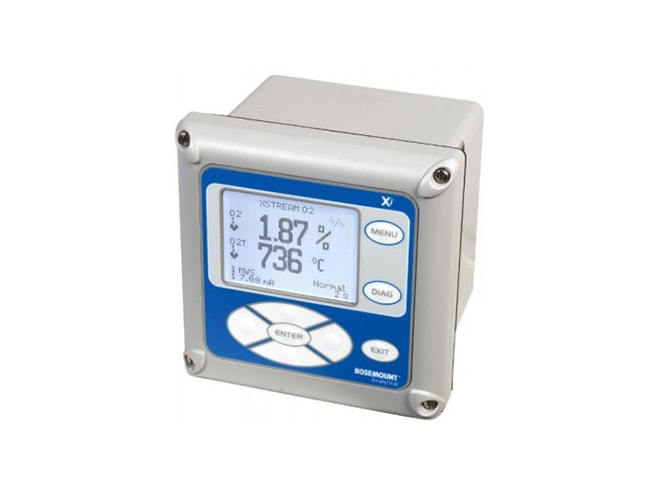The Rosemount Xi advanced electronics is for zirconium oxide oxygen probes. The zirconium oxide sensing technology for measuring the excess oxygen in combustion flue gases has gained prominence over the past several decades. This versatile electronics is specifically designed to run most O2 probes manufactured. The large backlit LCD display makes it easy to set up and operate. Fully automatic calibrations may be executed from this electronics with the addition of a small solenoid box for switching calibration gases. The Xi advanced electronics are designed to communicate with oxygen transmitters via a 7-wire cable with a 120V heater or the legacy 44V DR (direct replacement) probe.
Plant personnel often ask how frequently an oxygen analyzer requires calibration. The answer is very application-dependent based upon the fuels being burned, normal levels of oxygen and the sulfur content in the flue gases. The Xi addresses this concern by providing an on-line diagnostic that determines when a calibration should be conducted, eliminating many unneeded calibrations and the technician and gas resources they consume. The Xi electronics has an on-line impedance measurement for the sensing cell.
This feature can trigger a fully automatic calibration by sequencing solenoids to introduce calibration gases to the sensing cell. The Single Probe Sequencer (SPS) switches CAL gases to a single probe, while a Multi-Probe Sequencer (IMPS) can handle 1 to 4 probes. Many needless calibrations based on "time in service" are eliminated. A contact closure notifies the control room when a calibration is taking place. The oxygen output signal can be held at its last value, or released during calibration. The Xi can also initiate calibrations by traditional methods:
- Contact closure from the user's control room
- Time since last calibration feature; established by the autocalibration system
- Xi enhanced interface
- HART/AMS
Traditional O2 electronics will go into alarm if the process temperature exceeds the controlled heater temperature. This feature enables the Xi to turn off the internal heater in this event, use the process temperature to heat the cell, and calculate O2 on the fly from the changing process temperatures. Note that accelerated probe and cell damage may occur as a result of extended operation above 800°C (1462°F), but at least the measurement will not go off-line during this event.
Process upsets can sometimes cause a combustion process to go into substoichiometric or reducing conditions. The oxygen readings from one or more probes may decline all the way to zero. The stoichiometer cell will measure the amount of oxygen deficiency during these reducing conditions. The trends in your DCS can be set up for a lower range limit of -1 or -2% oxygen to depict the level of oxygen deficiency. The operator can see if his control actions to recover are having the desired effect. These types of events do not occur frequently, but knowing the parameters of the situation prevents overcorrecting while coming out of the reducing condition.



















